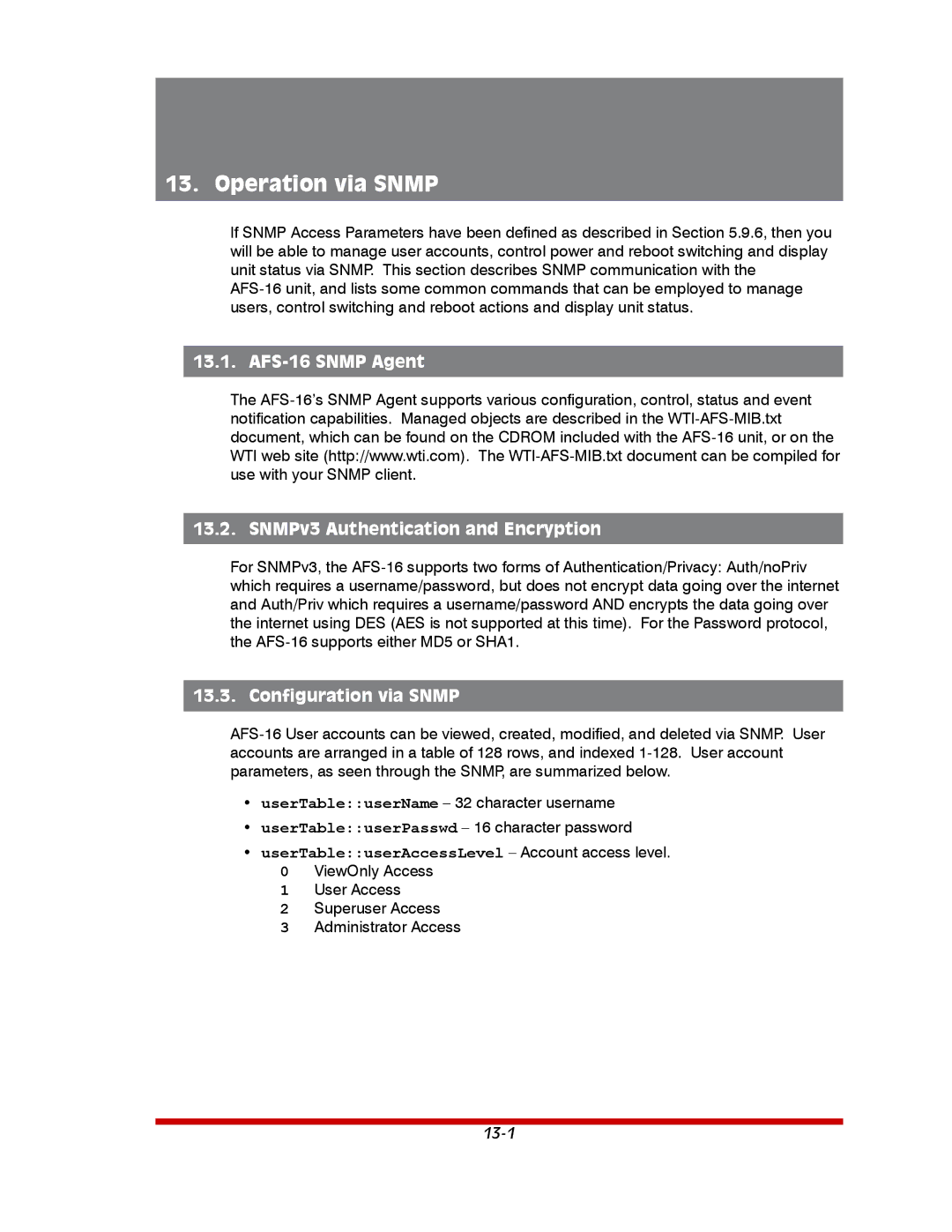13. Operation via SNMP
If SNMP Access Parameters have been defined as described in Section 5.9.6, then you will be able to manage user accounts, control power and reboot switching and display unit status via SNMP. This section describes SNMP communication with the
AFS-16 unit, and lists some common commands that can be employed to manage users, control switching and reboot actions and display unit status.
13.1. AFS-16 SNMP Agent
The AFS-16’s SNMP Agent supports various configuration, control, status and event notification capabilities. Managed objects are described in the WTI-AFS-MIB.txt document, which can be found on the CDROM included with the AFS-16 unit, or on the WTI web site (http://www.wti.com). The WTI-AFS-MIB.txt document can be compiled for use with your SNMP client.
13.2. SNMPv3 Authentication and Encryption
For SNMPv3, the AFS-16 supports two forms of Authentication/Privacy: Auth/noPriv which requires a username/password, but does not encrypt data going over the internet and Auth/Priv which requires a username/password AND encrypts the data going over the internet using DES (AES is not supported at this time). For the Password protocol, the AFS-16 supports either MD5 or SHA1.
13.3. Configuration via SNMP
AFS-16 User accounts can be viewed, created, modified, and deleted via SNMP. User accounts are arranged in a table of 128 rows, and indexed 1-128. User account parameters, as seen through the SNMP, are summarized below.
•userTable::userName – 32 character username
•userTable::userPasswd – 16 character password
•userTable::userAccessLevel – Account access level.
0 ViewOnly Access
1 User Access
2 Superuser Access
3 Administrator Access

